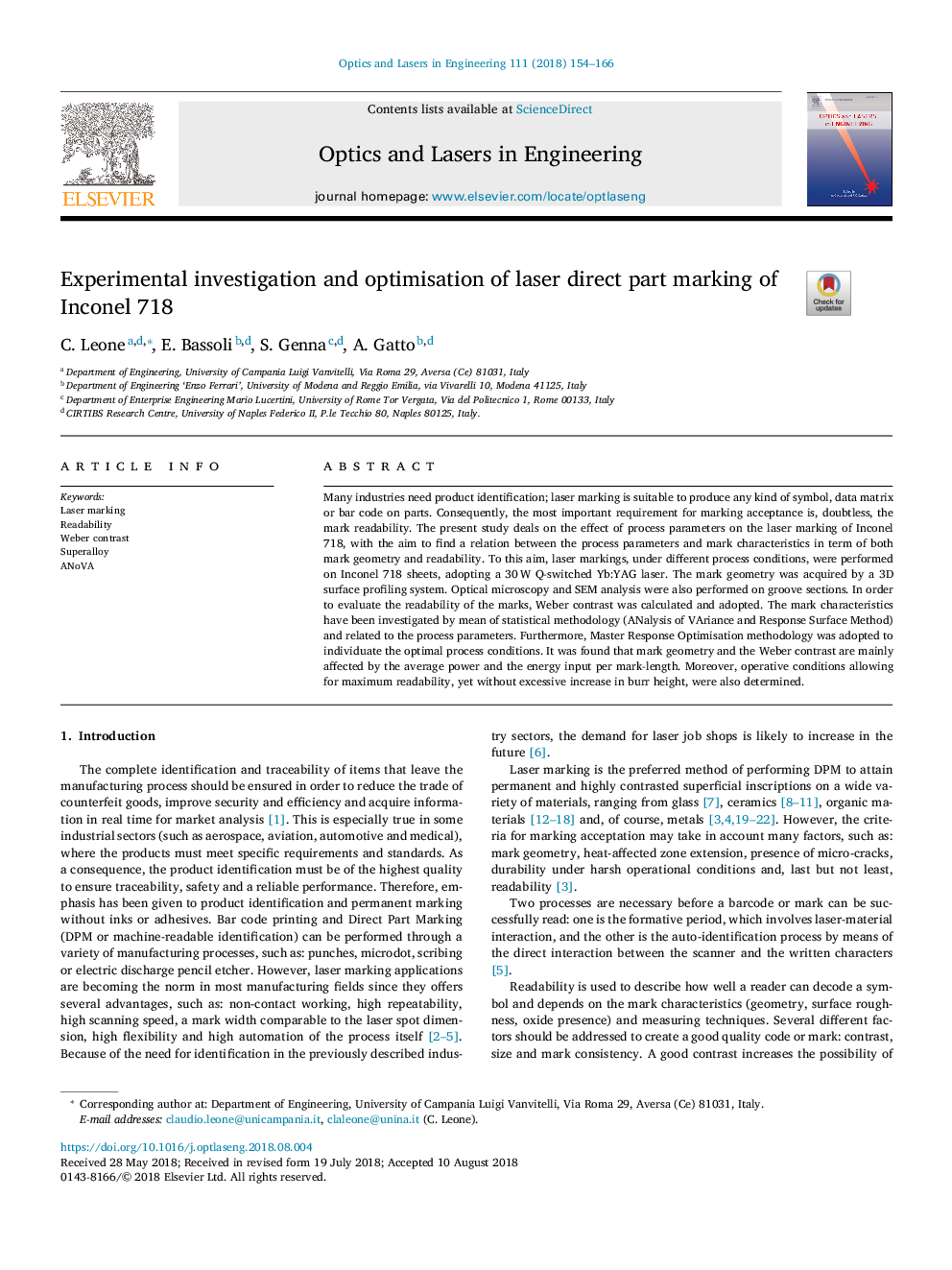| Article ID | Journal | Published Year | Pages | File Type |
|---|---|---|---|---|
| 11003692 | Optics and Lasers in Engineering | 2018 | 13 Pages |
Abstract
Many industries need product identification; laser marking is suitable to produce any kind of symbol, data matrix or bar code on parts. Consequently, the most important requirement for marking acceptance is, doubtless, the mark readability. The present study deals on the effect of process parameters on the laser marking of Inconel 718, with the aim to find a relation between the process parameters and mark characteristics in term of both mark geometry and readability. To this aim, laser markings, under different process conditions, were performed on Inconel 718 sheets, adopting a 30â¯W Q-switched Yb:YAG laser. The mark geometry was acquired by a 3D surface profiling system. Optical microscopy and SEM analysis were also performed on groove sections. In order to evaluate the readability of the marks, Weber contrast was calculated and adopted. The mark characteristics have been investigated by mean of statistical methodology (ANalysis of VAriance and Response Surface Method) and related to the process parameters. Furthermore, Master Response Optimisation methodology was adopted to individuate the optimal process conditions. It was found that mark geometry and the Weber contrast are mainly affected by the average power and the energy input per mark-length. Moreover, operative conditions allowing for maximum readability, yet without excessive increase in burr height, were also determined.
Related Topics
Physical Sciences and Engineering
Engineering
Electrical and Electronic Engineering
Authors
C. Leone, E. Bassoli, S. Genna, A. Gatto,
